
Note: the above analysis is from 200+ category-leading customers of Unbxd across the globe.
Your ecommerce search platform needs to understand these long-tail queries, deconstruct the query, understand the intent, and finally return the most relevant products.
This is solved most effectively by the NER algorithm at Unbxd.
Why is NER the right application for these long-tail queries?
Named Entity Recognition (NER) is an AI model that uses Natural Language Processing (NLP) to process and understand human intent as they type. Every ecommerce business has a diverse group of shoppers, and the keywords they use in their search queries for the same product or service will be different. The NER AI model breaks down each query to understand the shopper's intent and display the most relevant products and services.
For example,
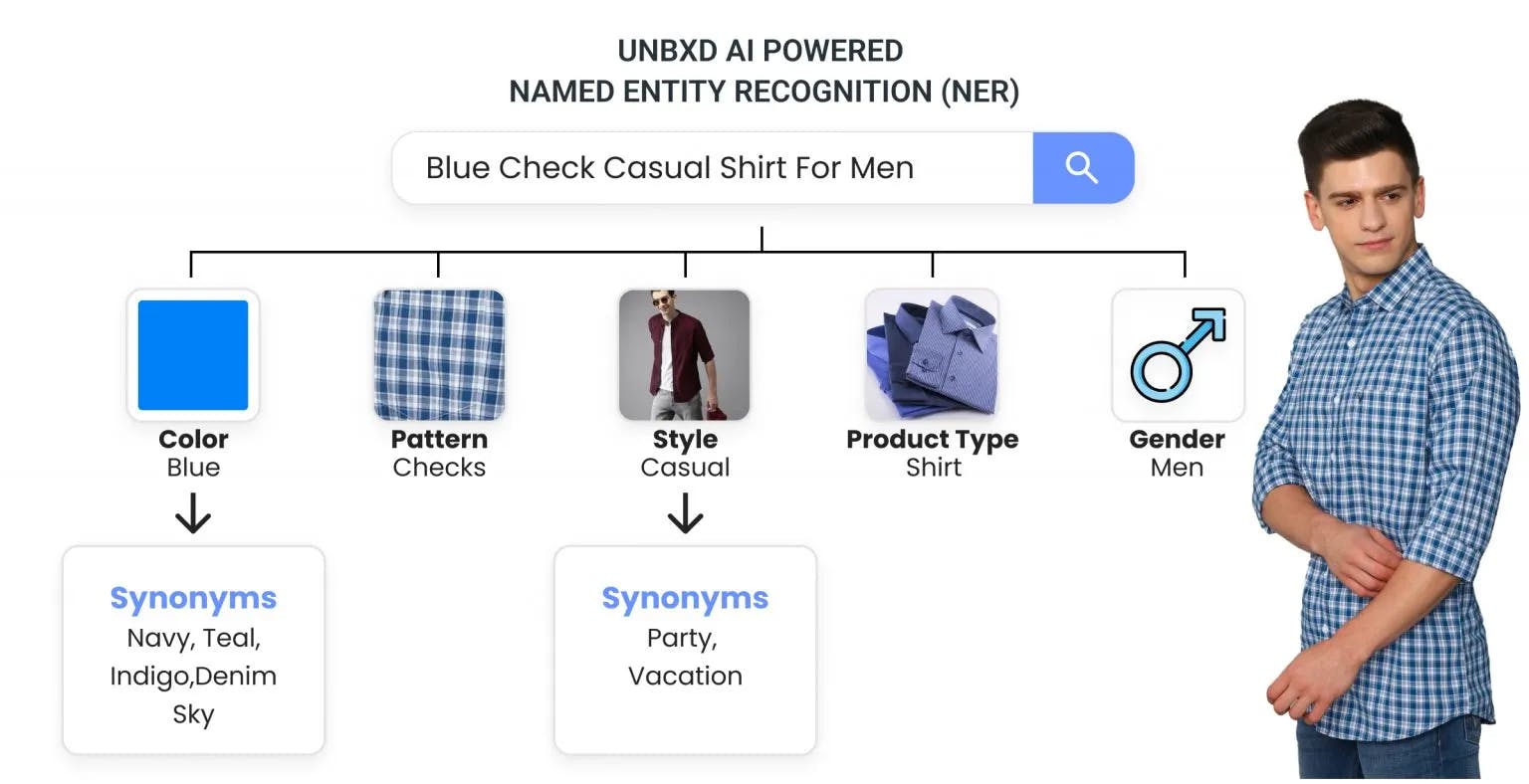
In the search query “Blue Check Casual Shirt For Men”, NER identifies the following entities: color (blue), pattern (checks), style (casual), product type (shirt), and gender (men).
AI does this faster than the blink of an eye and is scalable. Named Entity Recognition operates at many levels, and this is just the tip of the iceberg.
How does Named Entity Recognition work?
Named Entity Recognition identifies entities based on a search query. However, before we get into the workings of NER, let us find out what exactly a Named Entity is.
What is a Named Entity?
Named Entities are real-world objects that can be referred to by a name or category, including people, places, organizations, products, etc. In ecommerce, a named entity is an integral part of a search query. It includes product attributes in the catalog, themes like occasion, sale and custom attributes like aliments, symptoms etc. For example, brand, fabric, color, fit, etc. The following are several entities specific to various eCommerce segments.
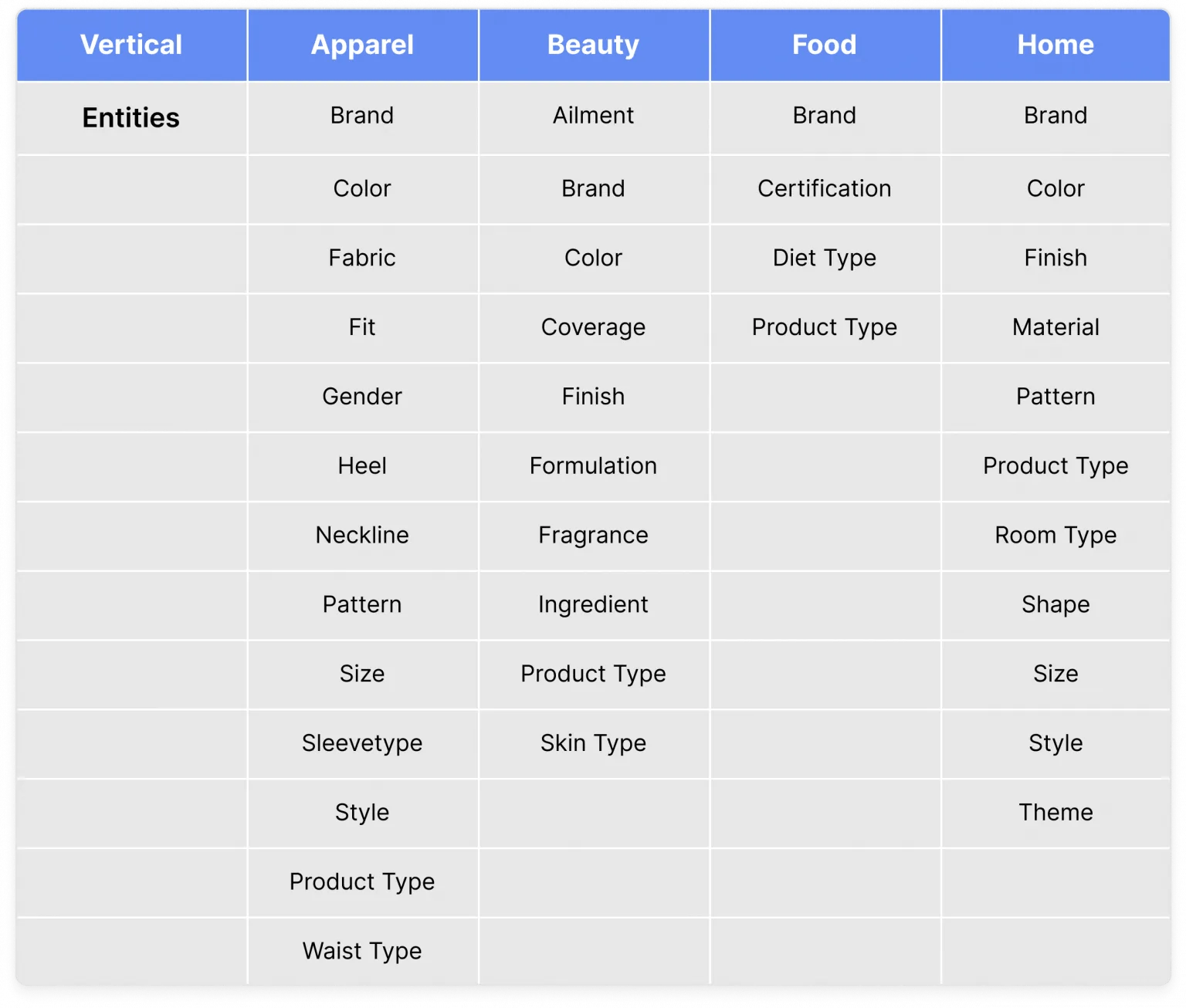
Let us deconstruct a few shopper’s search queries in different verticals to understand how these entities are identified.
- Fashion and Apparel:
“Red Print Suit For Men”
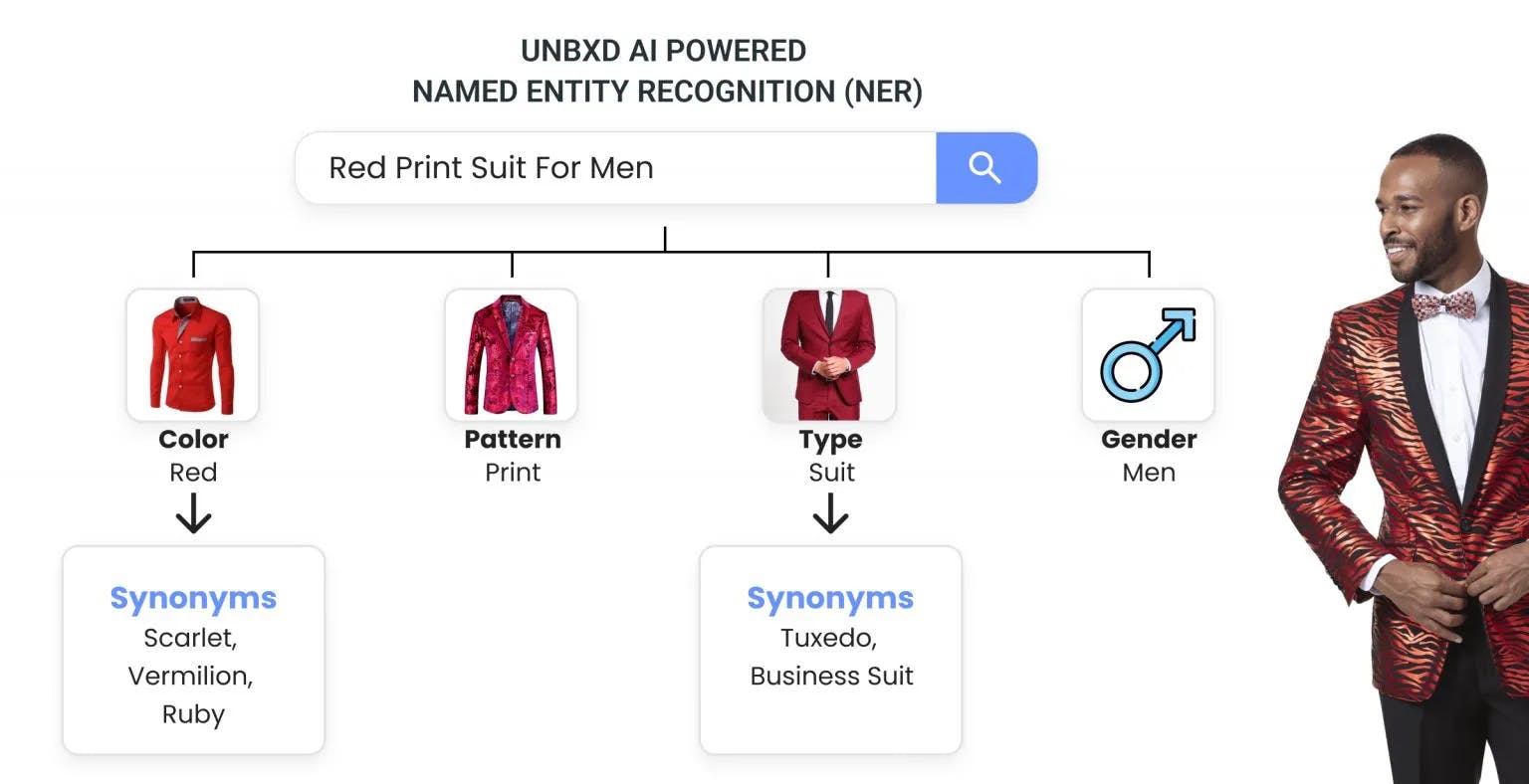
The entities in this search query are – color (red), pattern (printed), type (suit), and gender (men). The Fashion vertical utilizes the NER model the most with as high as 75% of search queries impacted. The deconstruction of input query to correctly understand a shopper’s intent goes a long way in differentiating yourself In the cluttered world of fashion ecommerce.
Across the Fashion & Apparel customer cohort of Unbxd, NER has propelled CTRs by an avg. of 10% on all search queries. On average, we saw an increase of $140K per week for enterprise customers.
- Beauty & Wellness:
“Vitamin E Body Lotion”

The entities in this search query are product type (body lotion), and Ingredient (Vitamin E). The standard conversion rate in Beauty & Wellness eCommerce is 2% i.e., of every 100 audiences, only two end up buying. The challenge for new ecommerce setups isn’t just reaching this standard but also continuously bringing their customers back and building a loyal fan base. One of the best ways of converting your audience is to give them the solution to their problems immediately, with the help of proper product discovery.
Understanding the nuances of the search query via NER has aided Unbxd’s customers to improve conversions by ~5% across this vertical.
- Home Décor and Furniture
“Round Dining Room Table Sets”
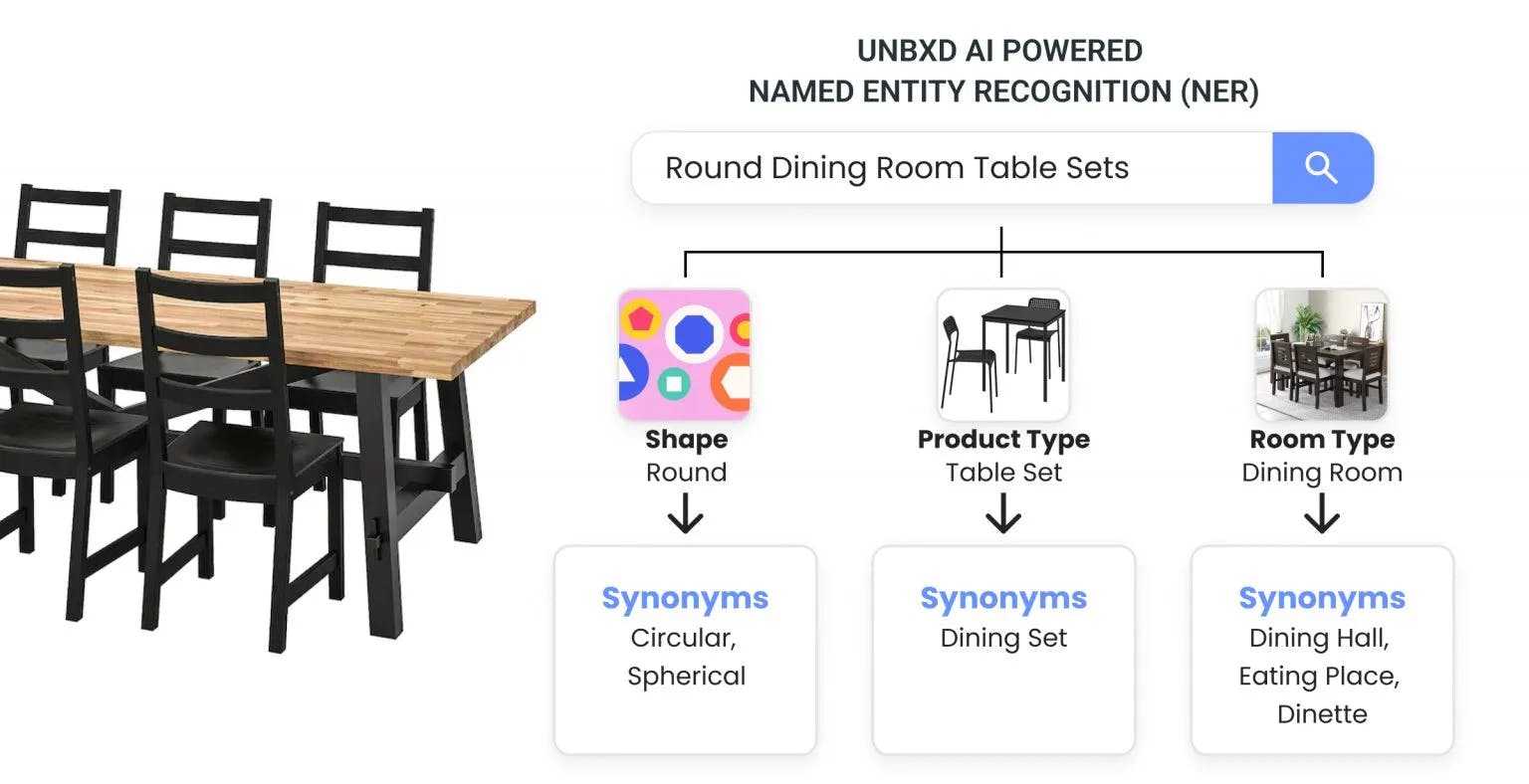
Entities in this query are shape (round), product type (table set), and room type (dining room). Home Décor and Furniture are usually considered purchases that, consumers typically spend a lot of time deciding on. Therefore, low affinity for impulse buys makes it imperative to capture the user’s intent when they use the search bar.
Most Home décor and furniture brands trust Unbxd to power their site search and have witnessed an increase of over 7% in Clickthrough rates (CTR) on search queries with the help of NER.
Let us go back to understand the working of NER.
We now know that a search query is laden with keywords. This keyword-based search is converted to a smart semantic search by NER. Semantic search is a method of extracting information that examines keywords and the meaning and context of the words and phrases used. The NER model identifies entities such as color, brand, product type, etc., and then performs a query rewrite to display relevant products as explained in the image above.
Here’s another example:
The search query “cap sleeve dress” will display caps and dresses normally. However, using NER the search results will show dresses with cap sleeves. This is because it identifies “cap sleeves” as a phrase entity of “sleeve type”.
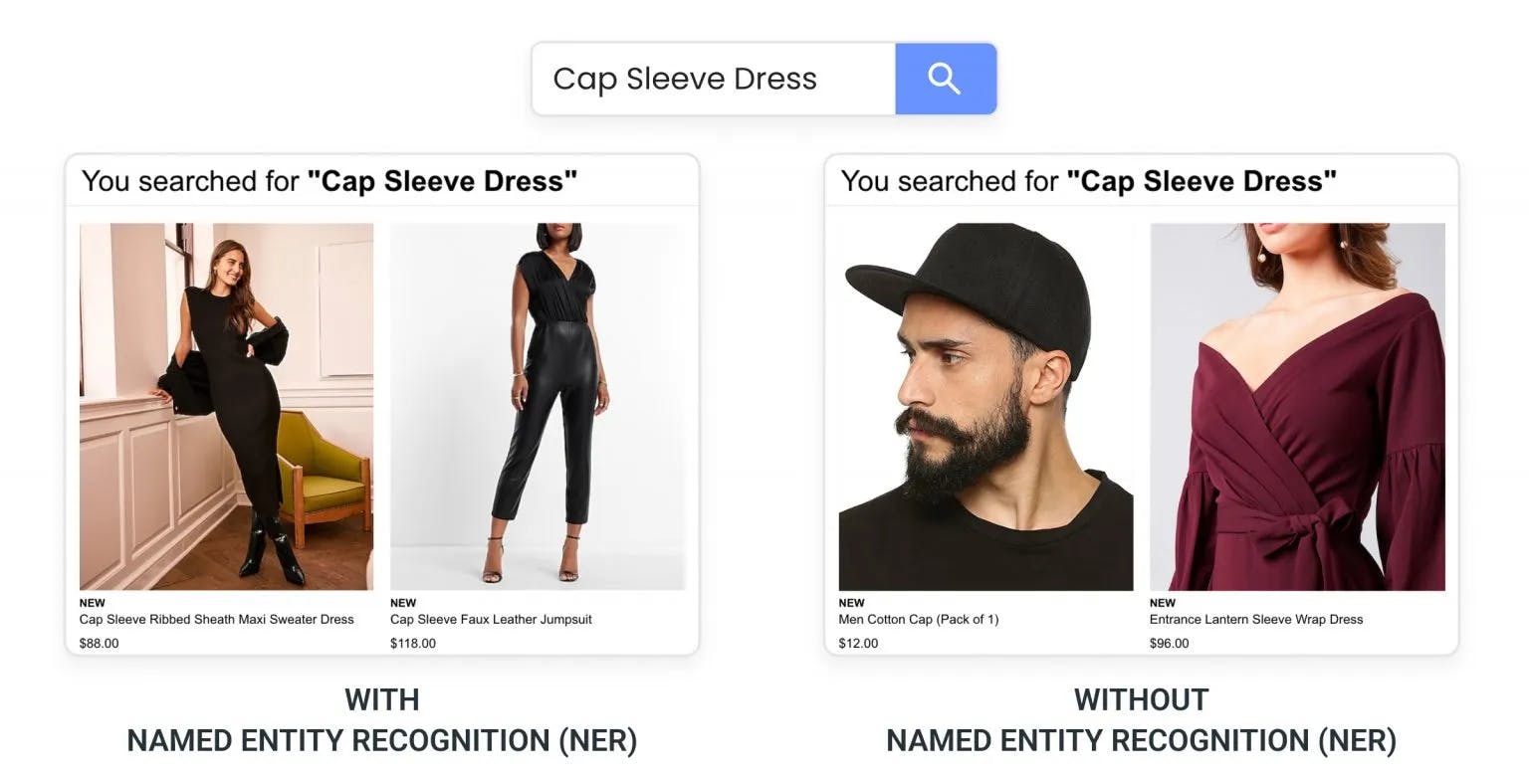
Named Entity Recognition is also responsible for:
- Boosting identified entities (along with synonyms) for better relevance
- Query rewrite (expansion) for low recall queries
- Thematic query identification
- User behavior coverage expansion.
To understand the technology behind the above NER model, refer to How AI-model named entity recognition makes search more relevant
In other words, NER makes buying easier and generates more revenue by displaying relevant products, providing a better shopping experience, and reducing search exits.
On average, across Unbxd’s customers, the NER model has helped improve search conversions by 5-7% and CTRs by up to 10% across verticals.
Conclusion
Ecommerce shopping is at the cusp of a generational leap and the average length of search queries is only increasing, invariably forcing eCommerce merchandizers to up their game. The search bar isn’t just responsible for matching text and providing results, but also maps the intent and needs of the shoppers to exhibit contextually relevant and personalized results.
With the NER model, you can identify key entities, such as product types, categories, etc., and create an engaging shopping experience.
By using Unbxd, your search relevancy will be significantly improved, resulting in higher conversions and click-through rates on your website.
To learn more about NER and Unbxd’s powerful AI technology and how to implement it in your site search, please reach out to us!







